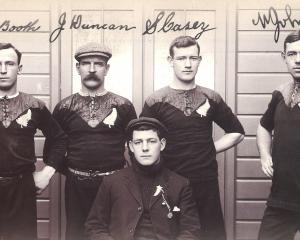
To the long list of things New Zealand and Australia dispute ownership of, add the slouch hat.

Perhaps its most famous devotee was US President Theodore Roosevelt, who wears it in the famous portrait of him astride his horse while commanding his "Rough Riders" in the Spanish-American war.
New Zealand soldiers started using slouch hats in the 19th century - photos of troops who took part in the Parihaka evictions of 1881 show them wearing the hats - and they also wore them in the Boer War.
So did the Australian army, which had also used it for years before officially adopting it into its uniform in 1903, so any race to claim "ownership" is a close-run thing.
As with so many famed objects, the slouch hat was created for practicality, not looks.
When a soldier was out on a hot, sunny parade ground, a wide-brimmed hat was vital protection from the sun, as was a visor.
However, once he was ordered to "shoulder arms", a wide-brimmed hat became a darned nuisance, as the barrel of the rifle would keep on hitting it.
Hence the practice of "slouching" the hat - folding up the right side of the brim and fastening it to the body of the hat.
To truly be a slouch hat, though, requires a puggaree - a sash worn around the hat, with strict rules about pleats, colours and the positioning of the regimental badge.
Both armies took their slouch hats to war in 1914 but in the wake of the doomed Gallipoli campaign and before their transfer to the Western Front, the New Zealand Army chose to modify its slouch hats.
The brim was flattened and the peak of the hat pushed upwards - hence creating the "lemon squeezer" hat.
That wasn't the end of the relationship between the New Zealand Army and the slouch hat, though.
The flattened brimmed slouch, known as the Mounted Rifles hat, was one of many hats used by the army in subsequent years. In 2012 the army decided to rationalise its headware requirements and the slouch hat - mostly - triumphed over its rivals.
Today the "MRH", as it is known in military circles, is worn by the army at all but the most important ceremonial functions, for which it dusts off the lemon squeezer.
The Australians have retained the upturned brim on their slouch hat, also known as the "digger's hat".
They also show a touch more flair on the puggaree front - Australia's boasts seven pleats, one for each state and one for the Australian Territories, while New Zealand has but three.
In the end, whoever can lay claim to the hat is irrelevant: its importance lies with the sacrifices made by those who have worn it.













